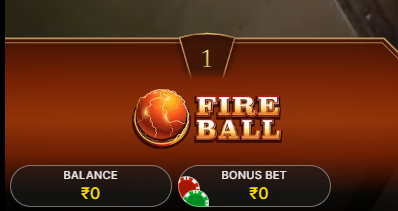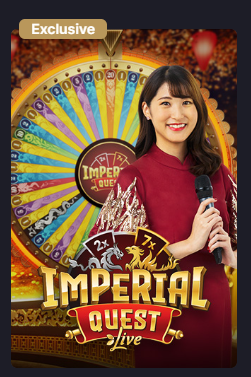Crazy Meaning in Tamil: Cultural Nuances and the Power of Expression
In the tapestry of human expression, words like “crazy” often carry a singular connotation, suggesting chaos or madness. However, when we delve into the Tamil language, we find a more intricate weave, where the word “Poi” (போய்) reveals layers of meaning that transcend the simple definition. It’s a term that can evoke laughter, admiration, or concern, depending on the context and the cultural lens through which it’s viewed. Today, we embark on an exploration of this enigmatic Tamil word, uncovering its multifaceted nature and the depth it brings to our understanding of the concept of “crazy.”
I.UnravelingtheWord”Crazy
In the tapestry of human language, certain words have the power to evoke a wide range of emotions and connotations. One such word, deeply rooted in the Tamil lexicon, is “crazy.” This word, often used to describe a state of mind or behavior that deviates from the norm, carries with it a complexity that can be explored from various angles.
The essence of “crazy” in Tamil is encapsulated by the word “போய்” (Poi), which, like its English counterpart, can denote madness, enthusiasm, or even a sense of whimsy. To unravel the true meaning behind this word, one must delve into the nuances of Tamil culture and the way language reflects societal values.
In its most literal sense, “Poi” is used to describe someone who is out of their mind, perhaps displaying irrational behavior or speaking nonsensically. However, this usage is not as common as it might be in other languages, as Tamil speakers often seek more subtle ways to express such states.
When “Poi” is employed to describe a person’s state of mind, it often does so with a sense of humor or light-heartedness. For instance, if someone is acting in a way that is unpredictable or not aligned with societal norms, they might be said to be “Poi.” This could be a playful way to acknowledge their uniqueness or eccentricity, rather than to imply that they are truly unstable.
On the flip side, “Poi” can also carry a more serious tone, indicating a level of distress or instability. It’s a word that can be used to discuss mental health issues, suggesting a state of mind that is far from the expected or typical. In such cases, the word may serve as a starting point for a conversation about the individual’s well-being and the support they might need.
Cultural nuances play a significant role in shaping the perception of “Poi.” In Tamil culture, there is a strong emphasis on community and family ties, which can influence the way individuals are perceived and labeled. For example, a person who is “Poi” might be seen as someone who needs understanding and compassion rather than judgment and isolation.
Moreover, the context in which “Poi” is used can dramatically alter its meaning. In a moment of laughter and camaraderie, “Poi” might be a term of endearment, highlighting the joy and spontaneity of the moment. Conversely, in a heated argument or a tense situation, the same word could be used to belittle or insult someone.
In literature and storytelling, “Poi” takes on a different life. It can be a device to create characters that are multifaceted and intriguing, whose actions and thoughts defy conventional wisdom. These characters might be considered “Poi” because they challenge the status quo, or because they embody a depth of emotion that is not easily understood or expressed.
The word “Poi” also reflects the broader human condition. It acknowledges that everyone, at some point, can be considered “crazy” in their own way. Whether it’s a fleeting moment of madness, a deep-seated emotional turmoil, or an expression of creativity, the concept of “crazy” is universal and relatable.
In summary, “Poi” is much more than a simple translation of the English word “crazy.” It is a complex word that reflects the rich tapestry of Tamil culture, the human experience, and the diverse ways in which language can convey meaning. Whether used in jest, in seriousness, or in storytelling, “Poi” is a testament to the power of language to capture the full range of human emotions and experiences.

II.TheCulturalNuancesof”Poi
In the heart of Tamil culture, the word “போய்” (Poi) is not just a mere descriptor of madness; it’s a vibrant tapestry woven with layers of meaning and emotional depth. This term, while often associated with a lack of sanity, carries a host of connotations that are as varied as the people who use it.
-
A Spark of LifeIn many circles, “Poi” is a shout of joy, a burst of unbridled energy. It’s the laughter that rings through the streets of Tamil Nadu, the dance that doesn’t need music, the smile that can light up a room. It’s a testament to the fact that sometimes, being “Poi” is simply about embracing life with a wild abandon, letting the spirit soar free from the confines of convention.
-
The Essence of PlayfulnessChildren are often referred to as “Poi” in Tamil households. It’s a playful label that acknowledges the natural curiosity and mischief that comes with youth. It’s not about being out of control; it’s about the innocent, carefree spirit that is as essential to life as the air we breathe.
-
A Compliment to the Free SpiritFor those who dare to live life on their own terms, “Poi” can be a form of admiration. It’s a nod to the individual who dares to be different, who challenges the status quo, and who doesn’t shy away from the unknown. It’s a way of saying, “You’re not just mad; you’re magnificent.”
-
The Art of ExpressionIn Tamil art and music, “Poi” is often the driving force behind creativity. The poets who weave tales of love and loss, the dancers who move with the rhythm of the earth, the musicians who play without fear of judgment—they are all “Poi” in their pursuit of artistic expression. It’s a state of being that allows for the full spectrum of emotions to be laid bare.
-
The Flip Side of “Poi”While “Poi” can be a source of inspiration and joy, it also has its darker side. It can represent a lack of discipline, a mind that is not tethered to reality. In this sense, “Poi” can be a warning, a cautionary tale about the dangers of losing oneself in the chaos of emotion.
-
The Social ContextThe way “Poi” is perceived in Tamil society can vary greatly depending on the context. In some families, it might be seen as a charming quirk, a delightful eccentricity. In others, it could be viewed with concern or even disapproval, as a sign of instability or unpredictability.
-
The Language of LoveIn the realm of romance, “Poi” can be a term of endearment. It’s the playful banter between lovers, the teasing that is laced with affection. It’s a way of saying, “I’m crazy about you,” without the need for words.
-
The Power of CommunityIn times of celebration, “Poi” unites communities. It’s the collective exuberance that fills the air during festivals and weddings, the shared laughter that echoes through the streets. It’s a reminder that in the joy of togetherness, there is a place for “Poi.”
-
The Legacy of “Poi”Through generations, “Poi” has become a part of the Tamil identity. It’s the spirit that lives on in the stories told, the songs sung, and the dances performed. It’s a legacy that encourages individuals to live fully, to love deeply, and to never be afraid to be themselves.
-
The Enduring ResonanceAs the days turn into years, the word “Poi” continues to resonate with the Tamil people. It’s a reminder that life is a journey filled with ups and downs, laughter and tears. And in the midst of it all, there is a place for the “Poi” within us, the part that dares to dream, to hope, and to love without reservations.

III.TheDoubleEdgedSword
In the tapestry of Tamil culture, the word “Poi” is not just a label for madness; it’s a multifaceted gem that can cut both ways, much like a double-edged sword. On one side, it’s a vibrant expression of the human spirit, while on the other, it’s a cautionary tale of potential chaos.
The flip side of “Poi” reveals a portrait of unpredictability. It’s the image of someone who might be seen as a loose cannon, someone who doesn’t always adhere to societal norms or expectations. This person might be described as impulsive, sometimes even reckless in their actions. The “Poi” in them is the wild card, the unexpected twist that can turn a calm situation into a whirlwind of activity.
In familial settings, the “Poi” individual might be the black sheep, the one who challenges traditions and norms. They might be the family member who, in their quest for freedom and authenticity, upends the status quo. While their spirit is undeniably free, their actions can sometimes leave those around them reeling, unsure of how to navigate the new terrain they’ve created.
Socially, the “Poi” person can be a source of both inspiration and frustration. They might be the creative genius who comes up with groundbreaking ideas, the artist whose work pushes boundaries and challenges perceptions. However, their unconventional approach can also lead to misunderstandings and conflict, as others struggle to keep up with their unpredictable pace.
The double-edged nature of “Poi” is also evident in the workplace. While a “Poi” employee might bring a spark of innovation and fresh perspectives, their unpredictable behavior can disrupt the established order. They might be the one who, in a moment of “Poi” inspiration, suggests a revolutionary new strategy, only to backtrack later, leaving colleagues confused and the company in a state of flux.
In personal relationships, the “Poi” factor can be a love-hate affair. The individual’s intense emotional swings can create a rollercoaster of feelings, with the people around them never quite knowing what to expect. They might be the one who, in a fit of “Poi” passion, gives their all to a relationship, only to pull back just as intensely, leaving the other person bewildered and heartbroken.
The “Poi” personality often embodies a deep sense of authenticity, a willingness to embrace life’s wildness and spontaneity. This authenticity is a powerful force, capable of inspiring others to break free from the constraints of convention. Yet, it’s this same authenticity that can lead to isolation, as others find it difficult to keep up with the whirlwind of emotions and actions.
The double-edged sword of “Poi” also reflects the human condition’s inherent complexity. It’s a reminder that while we admire the bold and the brave, we must also grapple with the consequences of their unbridled actions. It’s a challenge to find a balance between the freedom to express oneself and the responsibility to others.
In conclusion, the “Poi” in Tamil culture is a double-edged sword that cuts through the fabric of societal norms and expectations. It’s a symbol of the human spirit’s capacity for both brilliance and chaos, for love and loss, for innovation and destruction. Whether revered or feared, the “Poi” individual is a testament to the raw, unfiltered nature of human experience, a reminder that life is a complex blend of light and shadow, order and chaos.

IV.CrazyinTamilLiterature
In the realm of Tamil literature, the term “Poi” often takes on a dual nature, reflecting both the wild and the wonderful aspects of human nature. Characters who embody this word are often complex, their “craziness” a testament to the depth and diversity of emotions and experiences that shape their lives.
Characters like the mythical Karna from the epic “Mahabharata” might be described as “Poi” due to his tumultuous life. Born to a mother who was a lowly charioteer and a father who was a king, Karna’s life was fraught with challenges and misunderstandings. His “craziness,” in this context, is a reflection of his struggle to belong and his unwavering sense of honor, even in the face of adversity.
Similarly, in “Thirukkural,” the work of the Tamil sage Thiruvalluvar, the concept of “Poi” is used to describe the intensity of emotions. Thiruvalluvar speaks of love and attachment that can border on the “craziness” of obsession, yet he also acknowledges the beauty and necessity of such deep feelings in human life.
In modern Tamil literature, the term “Poi” is often used to describe characters who push the boundaries of societal norms. For instance, in the novel “Ponniyin Selvan” by Kalki, the protagonist’s “craziness” is a reflection of his unwavering commitment to justice and his unorthodox methods of achieving it. His “craziness” is not just a state of mind but a catalyst for change and a challenge to the status quo.
The character of Karuppan in “Kuzhuveli” by R.K. Narayan is another example. Karuppan’s “craziness” is evident in his unconventional lifestyle and his disregard for societal expectations. His “craziness” is a source of both amusement and concern, as it challenges the reader’s preconceived notions about what it means to live a “normal” life.
In poetry, the term “Poi” is used to evoke a sense of passion and intensity. Tamil poets like Subramania Bharati and C.N. Annadurai have used this word to describe the fervor of love, the depth of sorrow, and the power of determination. Their use of “Poi” in poetry is not just descriptive; it is transformative, bringing to life the emotional intensity of their verses.
In the theater and film industry, “Poi” is often used to create characters that are larger than life. Think of the character of Vellaiyammal in “Vellaiyammal” by K. Balachander, whose “craziness” is a blend of innocence and mischief, making her a beloved figure in Tamil cinema. Her “craziness” is a way to explore themes of identity and the struggle to be oneself in a world that constantly tries to define you.
The character of Thalaivasal Vijay in the film “Vijay Sethupathi” is another example. His “craziness” is a facade he uses to shield his vulnerabilities, a way to cope with the pressures of fame and the expectations of the public. His “craziness” is a mask that, when removed, reveals a man who is just as complex and relatable as anyone else.
In the realm of Tamil literature, the use of “Poi” is a way to explore the full spectrum of human experience. It is a tool that allows writers to delve into the depths of the human psyche, to examine the complexities of emotion, and to celebrate the unique qualities that make each individual different. Whether in epic tales, philosophical musings, or contemporary narratives, “Poi” is a word that continues to resonate, reminding us that sometimes, it’s the “craziness” in us that defines our very essence.

V.CrazyinEverydayLife
In the vibrant tapestry of everyday life in Tamil Nadu, the concept of “crazy” isn’t just confined to the confines of a dictionary. It’s a living, breathing part of the culture, often seen in the most unexpected places and moments. Here’s how “crazy” manifests in the daily lives of Tamilians:
People often gather in parks, streets, and community centers, engaging in lively discussions that can border on the “crazy.” These conversations are a mix of politics, religion, and local news, with each participant throwing in their two cents with fervor and passion. It’s not uncommon to see groups of friends or family members laughing and arguing over a game of cards or a round of carrom, their faces flushed with excitement and the thrill of the game.
In the realm of Tamil cinema, “crazy” is a staple. The films often feature characters who are quirky, unconventional, and sometimes even eccentric. These characters are the life of the party, bringing a sense of joy and unpredictability to the screen. From the slapstick humor of comedy films to the intense drama of action-packed thrillers, the “crazy” element adds depth and relatability to the characters.
The Tamil wedding scene is another place where “crazy” is celebrated. From the pre-wedding rituals to the grand celebrations, there’s a sense of chaos and excitement that defines the experience. The bride and groom are often surrounded by friends and family, all vying for attention and trying to outdo each other in terms of fun and festivities. The atmosphere is electric, with people dancing, singing, and participating in traditional games that require a bit of “crazy” spirit to enjoy fully.
In the realm of Tamil cuisine, “crazy” is evident in the bold flavors and unique combinations that make the food so distinctive. From the fiery hot curries to the sweet and tangy pickles, the taste buds are treated to an array of flavors that can be both exhilarating and a bit overwhelming. It’s not uncommon for a group of friends to gather around a table, each one eager to try a new dish, and the laughter and banter that ensue are a testament to the “crazy” spirit of Tamil food culture.
The Tamil festival season is another time when “crazy” is in full swing. Whether it’s the colorful and boisterous Pongal celebrations or the elaborate and ornate Diwali festivities, there’s a sense of communal joy that’s hard to match. People take to the streets, dressed in their finest attire, with decorations and fireworks that light up the night sky. The energy is palpable, and the spirit of “crazy” is at its peak as families and friends come together to celebrate life and tradition.
In the realm of Tamil music, “crazy” is a driving force. The music is often passionate and expressive, with artists pouring their hearts out through their songs. The dance forms, such as Bharatanatyam and Kuthu, are also characterized by their dramatic and intense movements, which require a “crazy” amount of energy and dedication to perform. The audience, too, is not shy about showing their enthusiasm, often dancing and clapping along to the rhythm.
The Tamil school system is also not immune to the influence of “crazy.” Students are encouraged to think outside the box and express themselves creatively. Whether it’s through art, music, or drama, there’s a strong emphasis on individuality and the celebration of the unique. The school plays and festivals are a showcase of this “crazy” spirit, with students putting on elaborate performances that are as much about entertainment as they are about self-expression.
In the world of Tamil sports, “crazy” can be seen in the fervent support for local teams and players. Whether it’s a cricket match or a football game, the stands are filled with fans who are as passionate about the game as the players themselves. The chants, the flags, and the sheer energy of the crowd can be electrifying, turning a simple game into a spectacle of “crazy” enthusiasm.
In conclusion, “crazy” in Tamil everyday life is a multifaceted concept that encompasses everything from lively conversations and festive celebrations to bold flavors and passionate pursuits. It’s a testament to the vibrant and dynamic nature of Tamil culture, where the spirit of “crazy” is embraced and celebrated in all its forms.

VI.Conclusion
In the tapestry of everyday life, the concept of “crazy” as embodied by the Tamil word “Poi” is both fascinating and complex. It’s a mirror reflecting the multifaceted nature of human experiences, emotions, and interactions. Let’s delve into how “Poi” finds its place in our daily lives.
The vibrant streets of Chennai echo with laughter and energy, where the spirit of “Poi” is alive and well. You see it in the colorful markets, where street vendors dance to the rhythm of their wares, their infectious joy spreading to the passersby. It’s in the tea shops, where the elderly gather to share stories, their laughter often described as “Poi,” as if their spirits are too full to contain it.
In the world of Tamil cinema, “Poi” takes center stage. Actors often portray characters that push the boundaries of conventional behavior, their “craziness” a reflection of the societal norms they challenge. It’s not just about madness; it’s about passion, dedication, and a relentless pursuit of what they believe in. From the bold moves of a hero to the whimsical antics of a comedic character, “Poi” adds depth and color to the narrative.
The Tamil language itself is a living entity, and “Poi” is one of its vibrant expressions. It’s not uncommon to hear someone described as “Poi” during a heated argument or a moment of extreme frustration. It’s a shorthand way of saying that the person’s emotions have taken over, that they are acting out of character, and it’s an acknowledgment that their behavior is, well, “crazy.”
In social settings, “Poi” can be a form of camaraderie. Friends might use it to describe each other during a playful moment, as if to say, “You’re acting so out of the ordinary, but in the best way possible.” It’s a term that can bridge the gap between people, creating a sense of shared experience and understanding.
Education is another sphere where “Poi” finds its way. Students might be referred to as “Poi” for their unconventional methods of learning or for their unorthodox approaches to problem-solving. It’s a nod to their creativity and their ability to think outside the box.
Workplaces aren’t immune to the spirit of “Poi.” Employees might be praised for their “crazy” ideas that lead to innovation or for their “Poi” efforts that push the company forward. It’s a recognition that sometimes, the most outlandish ideas can lead to the greatest breakthroughs.
Family life is also rife with “Poi.” Children might be called “Poi” for their mischievous behavior or for their imaginative play. It’s a term of endearment that acknowledges their boundless energy and their capacity for joy.
As we navigate the complexities of our daily lives, the presence of “Poi” is a constant reminder that life is not always straightforward. It’s about the unexpected twists and turns, the moments of joy and sorrow, the times when we feel like we’re walking on the wild side. “Poi” is a part of our human experience, a testament to our ability to be both ordinary and extraordinary, all at the same time.
In the realm of fashion, “Poi” is celebrated through the creative designs that defy convention. Tamil designers take risks, experimenting with colors and patterns that might be considered “crazy” by the mainstream, but they know that it’s these unconventional choices that set trends and ignite change.
And in the world of art, “Poi” is the heartbeat of every masterpiece. It’s the wild brushstrokes, the bold colors, the unexpected compositions that make a painting or a sculpture come alive. It’s the artist’s voice, unfiltered and raw, expressing emotions that resonate with the soul.
As we reflect on the role of “Poi” in everyday life, we come to realize that it’s not just a word; it’s a way of life. It’s about embracing the unpredictable, the unusual, and the extraordinary. It’s about living with passion, with fervor, and with a sense of wonder. In a world that often seeks to categorize and control, “Poi” stands as a beacon of freedom, a reminder that there’s beauty in the chaos, and that sometimes, the most “crazy” ideas are the ones that change the world.